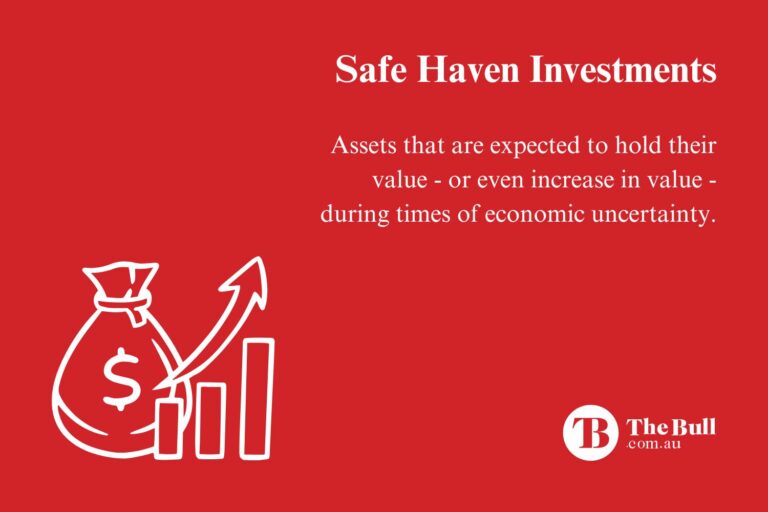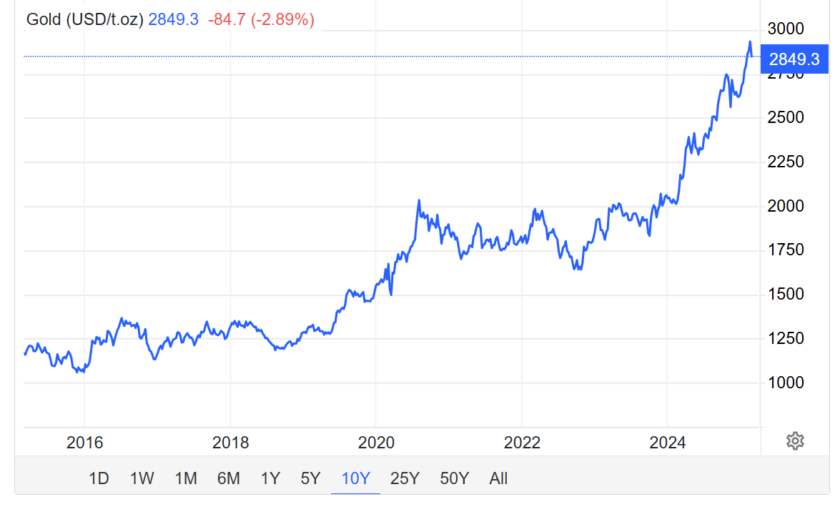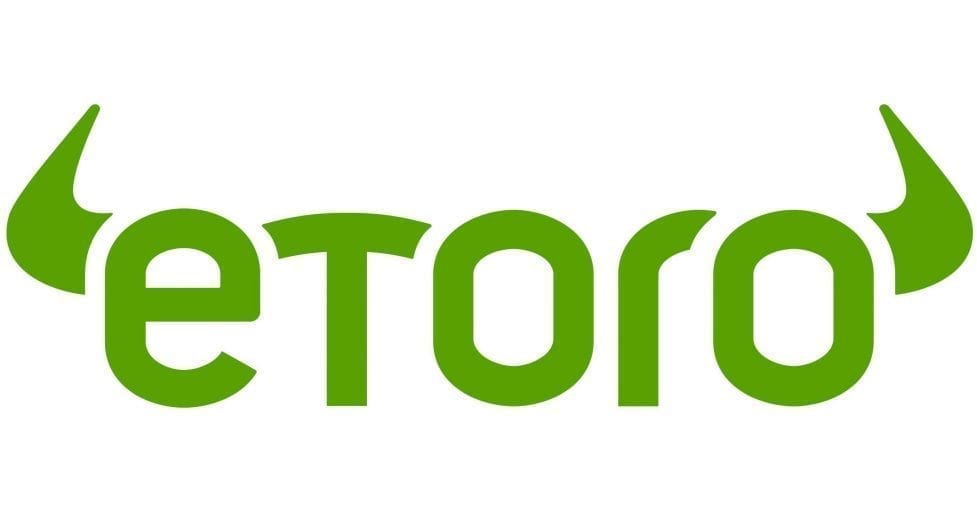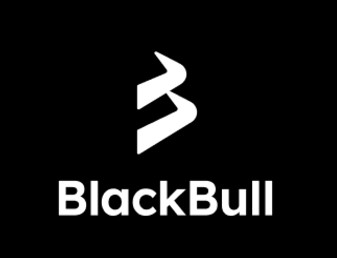Social and psychological explanations for investing behavior have seeped into the world of share market investing through the advent of the academic field of Behavioral Finance.
Loss aversion is one of the most significant contributions behavioral finance has introduced into stock market investing. Simply put, loss aversion states investors feel more pain from a loss in a stock investment than the pleasure they get from an equivalent gain.
This helps explain investing behavior during or in anticipation of uncertainty, turmoil, or full blown recessions in domestic and global markets.

Top Australian Brokers
- Pepperstone - Trading education - Read our review
- IC Markets - Experienced and highly regulated - Read our review
- eToro - Social and copy trading platform - Read our review
What are Safe Haven Investments
Safe havens act like ports in the stormy seas of economic troubles. An ideal safe haven investment would maintain its value or even appreciate in price in the face of negative economic performance locally and/or globally.
In short, safe havens buck the heavy seas while other investments are sinking beneath the waves unleashed by economic turmoil.
Safe havens buck the heavy seas while other investments are sinking beneath the waves unleashed by economic turmoil.
How to Invest in Safe Haven Investments
Some market experts suggest there are five characteristics investors should look for when searching for safe haven investments:
- Liquidity
- Functionality
- Limited Supply
- Certainty of demand
- Permanence
Functionality, certainty of demand , and permanence are the keys to safe haven investments. Whatever the asset, it must have a use that maintains demand for it over long periods without becoming outdated over time. Limited supply refers to the balance between supply and demand for the asset, where supply increases should not outweigh demand for the asset. Liquidity refers to the ease of converting the asset into cash.
Risk management professionals look for correlations between stocks and other investment assets in the search for safe haven investments. A statistical tool called the Pearson Correlation Coefficient, or the Pearson R can identify relationships between stocks and other assets, business sectors, and individual stocks.
The correlation uncovered by applying the Pearson formula is either positive (+1 ) or negative (inverse or -1). That means in response to certain conditions the two stocks, assets or sectors will respond either positively, when both go up in value, or inversely or negative when the two move in opposite directions. Safe haven investments are negatively correlated.
The Pearson coefficient is available to investors on some trading platforms and financial websites.
In simple terms, common sense suggests that in response to economic slowdowns, the price of stocks in the consumer discretionary sector will go down while stocks in the consumer staples sector will go up. The distinction between the two sectors is that essential goods and services are considered staples while non-essential goods and services are discretionary. Declining disposable income in tough times leads consumers to limit purchasing to staples.
This suggests investors looking to diversify their portfolios with safe haven investments would include best of breed stocks in the consumer staples sector.
There also correlations between commodity prices and stock prices. If the price of oil drops, one would assume the price of transportation stocks relying on fuel would go up. However, it is important to note that correlation does not always equal causation. Studies have shown a murky relationship between the price of oil and the price of transportation stocks, with other issues like the overall economic climate blurring the relationship.
The Best Safe Haven Investments
For centuries gold has been used as an economic hedge against downturns, inflation, and geopolitical tensions. In the modern world, investors no longer need to take direct possession of physical gold. Gold bullion can be bought and stored with gold dealers and a smattering of banks.
For centuries gold has been used as an economic hedge against downturns, inflation, and geopolitical tensions.
Financial instruments remain the primary method for the average investor to access gold as a safe haven. Choices are plentiful, from mutual and exchange traded gold funds , the gold futures markets, and individual gold stocks of mining companies.
For the risk averse investor, buying the stocks of individual gold miners or exchange traded funds comprised of gold miners might be the simplest method, but has risks not associated with other methods.
Gold mining stocks and ETFs are not linked to the price of gold,, with a host of other factors influencing the price of the stock or the ETF.
In February of 2025, the price of gold in US dollars hit an all-time high — $29532.79 – in the midst of global economic uncertainty surrounding changes in US economic policy. Here is a ten year chart of the price of gold:

Source: tradingeconomics.com intraday 28 February of 2025
The majority of other safe haven sources are fixed income investments, with bonds and government securities at the top of the list.
Historically, bonds have an inverse or negative correlation with stocks. Stocks provide investors with superior returns, with higher risk. Bonds are relatively low risk, but the fixed return pales in comparison with the potential returns from stocks.
Government securities from developed economies are safe havens with minimal risk but also minimal rewards. Treasury Bills (T-Bills) from the United States lead the way around the world, but Australia also offers government securities
Bank deposits are an additional safe haven fixed income investment with minimal risk and minimal reward.
Currency trading has the potential of greater reward accompanied by lower risk. Since the Bretton Woods Agreement of 1944, the US dollar has functioned as the primary reserve currency world wide and is seen as the safest haven in global currencies.
Currency trading has the potential of greater reward accompanied by lower risk.
The Japanese Yen is considered a solid backup safe haven when volatile conditions in the US impact both stocks and bonds.
For risk tolerant investors, defensive stocks may be more attractive as safe havens. Top stocks in utilities, healthcare, and biotechnology and pharmaceuticals are considered defensive as their services remain essential during economic downturns.
Finally, defensive stocks benefit from what could be the greatest safe haven of all – time.
The Great Financial Crisis (GFC) of 2008) is approaching two decades old. At that time, investors around the world watched in horror as stocks they had spent hours researching before making an investment decision dropped in price and kept dropping.
Investors with the wisdom to follow the universal advice of market experts to invest only discretionary income could avoid the panic selling of the herd and wait. In less than a decade, the vast majority of stocks had recovered.
Safe havens are investments whose value remains stable or appreciates in the face of economic volatility, uncertainty, slowdowns, recessions, or depressions.
Gold remains the preferred safe investment by investors around the world, available in physical form from gold dealers or via investment vehicles like exchange traded and mutual funds, gold mining stocks and the gold futures markets.
Other safe havens include bonds, government securities, and bank deposits along with defensive stocks from the consumer staples, utilities, healthcare , and biotechnology and pharmaceutical business sectors.





